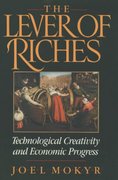Question
Problem 1: The U.S. government has a food stamp program for families whose income falls below a certain poverty threshold. Food stamps have a dollar
Problem 1: The U.S. government has a food stamp program for families whose income falls below a certain poverty threshold. Food stamps have a dollar value that can be used at supermarkets for food purchases as if the stamps were cash, but the food stamps cannot be used for anything other than food. Suppose the program provides $500 of food stamps per month to a particular family that has a fixed income of $1,000 per month.
a.With "dollars spent on food" on the horizontal axis and "dollars spent on non-food items" on the vertical, illustrate this family's monthly budget constraint. How does the opportunity cost of food change along the budget constraint you have drawn?
b.How would this family's budget constraint differ if the government replaced the food stamp program with a cash subsidy program that simply gave this family $500 in cash instead of
$500 in food stamps? Which would the family prefer, and what does your answer depend on?
c.How would the budget constraint change if the government simply agreed to reimburse the family for half its food expenses?
d.If the government spends the same amount for this family on the program described in (c) as it did on the food stamp program, how much food will the family consume? Illustrate the amount the government is spending as a vertical distance between the budget lines you have drawn.
Problem 2: Consider a simple model of how economic circumstances are changed when the government enters the education market. Suppose a household has an after-tax income of $50,000.
a.With "dollars of education services" on the horizontal axis and "dollars of other consumption" on the vertical, illustrate this household's family budget constraint. Label this budget constraint I1. Assume that the household can buy any level of school spending on the private market.
b.Now suppose the government uses its existing tax revenues to fund a public school at $7,500 per pupil; i.e. it funds a school that anyone can attend for free and that provides $7,500 in education services. Illustrate and explain how this changes the choice set.
c.How might the availability of free public schools cause some children to receive more education service than before they would in the absence of public schools? Might some children might receive fewer education services once public schools are introduced? Explain.
d.Now suppose the government allows an option: either a parent can send her child to the public school or she can take a voucher to a private school and use it for partial payment of private school tuition. Assume that the voucher is worth $7,500 per year, ie. it can be used to pay for up to $7,500 in private school tuition. Illustrate the new budget constraint. Label this budget constraint I2. Is it still possible that some children will receive less education
than they would if the government did not get involved at all (i.e. no public schools and no
vouchers)? Explain.
Step by Step Solution
There are 3 Steps involved in it
Step: 1

Get Instant Access to Expert-Tailored Solutions
See step-by-step solutions with expert insights and AI powered tools for academic success
Step: 2

Step: 3

Ace Your Homework with AI
Get the answers you need in no time with our AI-driven, step-by-step assistance
Get Started


